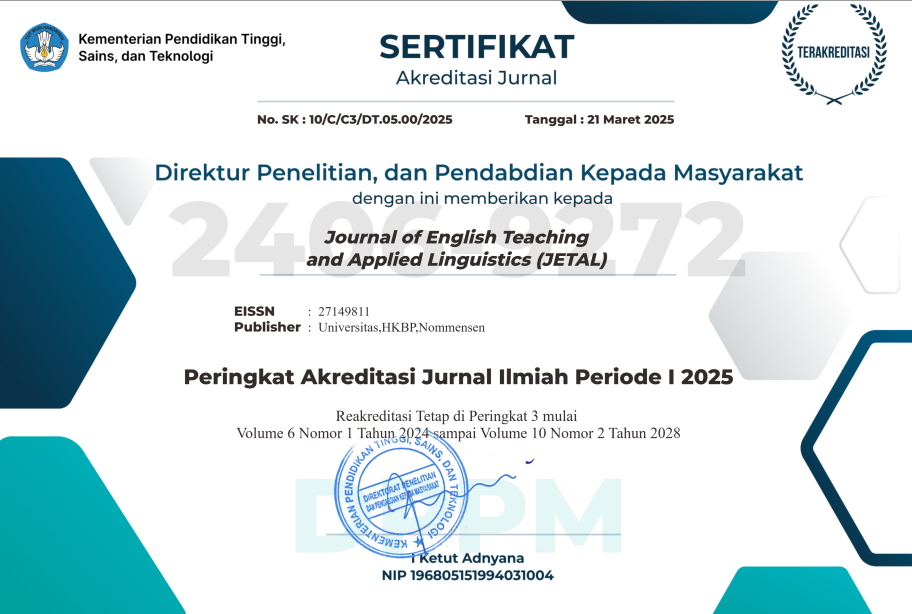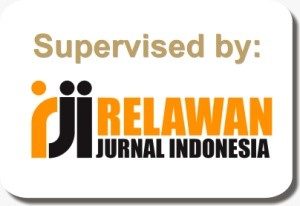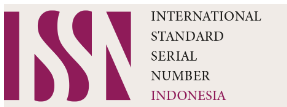Multicultural Ability in Dental English Impressions of Hypermedia Email: A Specific Educational Paradigm
Abstract
Given the noteworthy connection between special English education acuities and grade point average (GPA), as a directory of educational success, and settlement, it is essential to support the students’ English education talents. Two-way ANCOVA was engaged to evaluate the knowledge efficiency of the informal AI syllabus with dissimilar learning method (i.e., the series of perform schemes and the set of empirical learning) and masculinity. A cross-sectional appraisal was operated through online review and fractional slightest systems was applied in evaluating the records. Universal English for Dental Purposes (EDP) is educated from the opinion of actual conditions and it implies that education English is absorbed on a specific texts and particular terminology. But what is more significant education EDP terminology trusts on emerging statement services, difficulty-resolving, and choice production (Milosavljevic et al., 2015). The investigation recommends that scholars are of the opinion that more communication is continued through e-mail than might have been possible in communication interaction and more, that the English knowledge helps as valuable framework for more acquiring. On the foundation of the contributors' support and reaction, the probable educational worth of an e-mail may converse action in EDP program is undisputable.
The placement-plan reaction provides durable indication of the possible educational profits of the e-mail scheme. Academic communication through e-mail replace to provide a real method to connect the opening between teaching EDP happenings and the energetic firm-changing education setting.
References
2. Onrubia, J., & Engel, A. (2009). Strategies for collaborative writing and phases of knowledge construction in CSCL environments. Computers in Education, 53(4), 1256-1265.
3. Oxford, R. (1990). Language Learning Strategies: What Every Teacher Should Know. New York: Newbury House Publishers.
4. Howell, Angela; Caldarella, Paul; Korth, Bryan: Young, K. Richard (2014), Exploring the Social Validity of Teacher Praise Notes in Elementary School, Journal of Classroom Interaction, v49 n2 p22-32 2014University of Houston, College of Education. 442 Farish Hall, Houston, TX 77204-5026. Web site: http://www.jciuh.org/
5. Richards, J. C. (2005). Communicative language teaching today. Singapore: RELC,1-44.
6. Hatch, E. and Farhady, H. (1982). Research Design and Statistic for Applied Linguistics. London: New Bury House Production, Inc.
7. Cooper, M., & Selfe, C. (1990). Computer conferences and learning: Authority, resistance and internally persuasive discourse. College English, 52, 847 — 873.
8. Kern, R. (1995). Restructuring classroom interaction with networked computers: Effects on quantity and characteristics of language production. Modern Language Journal, 79, 457 — 476.
9. Belz, J. (2002). Social dimensions of telecollaborative foreign language study. Language Learning & Technology, 6 (1), 60 — 81.
10. Morgan, R., Whorton, J., & Gunsalus, C. (2000). A comparison of short-term and long-term retention: Lecture combined with discussion versus cooperative learning. Journal of Instructional Psychology, 27(1), 53-
11. Schwienhorst, K. (1997). Talking on the MOO: Learner autonomy and language in tandem. Paper presented at the CALLMOO: Enhancing Language through Internet Technologies Conference. Bergen, Norway.
12. Mark Warschauer, Heidi Shetzer, and Christine Meloni (2000), Teachers of English to Speakers of Other Languages, Internet for English Teaching, ISBN 0-939791-88-9 (paper).
13. Minister of Education, Malaysia. (2006). A speech at monthly assembly of Ministry of Education Malaysia, 2 April 2006, Putrajaya. Retrieved from http://ijedict.dec.uwi.edu/viewarticle.php?id=618&layout=html
14. Vygotsky, L. S. (1978). Mind in society: The development of higher psychological processes. Cambridge, MA: Harvard University Press.
15. Zhanghongling (2006).The development tendency of the modern foreign language teaching and the computer assisted instruction. Computer- Assisted Foreign Language Education 3.
16. Warschauer, M. (1995). E-mail for English teaching. Alexandria, VA: TESOL Publications.
17. Abugohar, M. A., Al-Hnifat, M. A., Al-Smadi, 0. A., Rashid, R. A., Yunus, K. (2019). English language speaking skill issues in an EDP context: causes and solutions.
18. International Journal of English Linguistics, 9 (3), 211-225. D01:10.5539/IJEL.V9N3P211
19. Antic, Z. (2015). Benefits of student-centered tandem teaching in Medical English. Language of Medicine, 143(7-8), 500-504. DOI: 10.2298/SARH1508500A
20. Asgari Arani, J. (2017). An innovative media platform-supported blended methodology in English for dental purposes program. International Journal of Emerging Technologies in Learning (iJET), 12(3), 98-109. DOI.org/10.3991/ijet. v12iO3.6441
21. Avota, B. (2018). Evaluation of readiness for the professional development of Dental practitioners in terms of distance learning. Rural Environment. Education. Personality, 11, 331-338. DOI: 10.22616/REEP.2018.040
22. Daiganova. B. (2019). Teaching medical English through professional captioning videos. Journal of Language and Cultural Education, 7, 95-107. DOI: 10.2478/jolace-2019-0013
23. Krtienbring, J., Penza, T. M., Gutmann, J., Muehlich, S., Zolk, 0. Wojnowski, L., Maas, R., Engelhardt, S., Sarikas, A. (2014). Accuracy and completeness of drug information in Wikipedia: a comparison with standard textbooks of pharmacology. PLoS One, 9(9), e106930. DOI: 10.1371/joumal.pone.0106930
24. Krishnasamy, Ch., Sik Yin Ong, Yock, Y., Lim, I. S. SE, Rees, R., Car, J. (2016). Factors influencing the implementation, adoption, use, sustainability, and scalability of mLearning for Dental and nursing education: a systematic review protocol. Systematic Reviews, 5, 178. D01:10.1186/s13643-016-0354-x
25. Liu, Ch. (2019). Approach of the corpus research on Dental English prepositions. 2019 International Conference on Arts, Management, Education, and Innovation, (ICAMEI 2019), 1187-1191. DOI:10.23977/icamei.2019.244
26. Lodhi, M. A, Shamim, M., Robab, M., Shahzad, S. H., Ashraf, A. (2018). English for doctors: an ESP approach to needs analysis and course design for Dental students. International Journal of English Linguistics, 8, 205-214.DOI:10.5539/ijel.v8n5p205
27. Lum, L., Alqazli, M., Englander, K. (2018). Academic literacy requirements of health professions programs: challenges for ESL students. TESL Canada Journal, 35(1), 1-28. DOI: 10.18806/tesl.v35i1.1282
28. Milosavljevic, N. D., VuletiO, A., Jovkovie, L. (2015). Learning dental English: a prerequisite for successful academic and professional education. Srpski arhiv za celokupno lekarstvo, 143(3-4), 237-240. DOI: 10.2298/SARH1504237M
29. Mungra, Ph. (2010). Teaching writing of scientific abstracts in English: CLIL methodology in an integrated English and Medicine course. lberica, 20, 151-165.
30. Portal Federal'nyh gosudarstvennyh obrazovatel'nyh standartov vysshego obrazovaniya (2020). [Portal of Federal State Educational Standards of Higher Education] Porta Federal'nyh gosudarstvennyh obrazovatel'nyh standartov vysshego obrazovaniya =Portal of federal state educational standards of higher education. Available on: http://fgosvo. ru/fgosvo/143/141 /17/76
31. Rodis, 0. M. M., Barroga, E., Barron, J. P. et al. (2014). A proposed core curriculum for mental English education in Japan. BMC medical Education, 14(1), 239. DOI: 10.1186/s12909-014-0239-4
32. Stienen, M., Schaller, K., Cock, H. R. et al. (2016). E-Learning resources to supplement postgraduate neurosurgery training. Acta Neurochirurgica, 159, 325-337. DOI: 10.1007/s00701-016-3042-7
33. Sutherland, S., Jalali, A. (2017). Social media as an open-learning resource in Dental education: current perspectives. Advances in Dental Education and Practice, 8, 369 -375. DOI: 10.2147/AMEP.S112594
34. Wallinheimo, K., Pitkanen, K. K. (2016). IPads in medical language courses at the University of Helsinki. Language Learning in Higher Education, 6(1), 77-94. DOI 10.1515/cercles-2016-0004
35. Yalcin, B. M., Karahan, T. F., Karadenizli, D., Sahin, E. M. (2006). Short-term effects of problem-based learning curriculum on students' self-directed skills development. Croatian Dental Journal, 47(3), 491-498.
36. Yang, M., O'Sullivan, P. S., Irby, D. M. et al. (2019). Challenges and adaptations in implementing an English-medium Dental program: a case study in China. BMC, Dental Education, 19(15). DOI: 10.1186/s12909-018-1452
37. Cannella, Kenneth B. Matheny, David W. Aycock, James L. Pugh, William L. Curlette, Kathleen A. Silva (1986), Stress Coping: A Qualitative and Quantitative Synthesis with Implications for Treatment, Published by the Counseling Psychologist (TCP) October 1, 1986.
38. Hull M.(2004) Whose needs are we serving? How is the design of Curriculum for English for Dental Purposes Decided? [Serial online] 2004;411-417. Available from: http://www.UsingEnglish.
com.
39. Naerssen MM. (1987) Improving English dental Recordings by Foreign Dental Graduates. Washington, D.C: ERIC Clearinghouse; 1978.
40. Svendsen C, Krebs K. ( 1884) Identifying English for the job: Examples from health care occupations. Тhe ESP Journal. 1984; 3(2):153-64
Authors retain copyright and grant the journal right of first publication with the work simultaneously licensed under a Creative Commons Attribution-ShareAlike 4.0 International License (CC BY-SA 4.0) that allows others to share the work with an acknowledgment of the work's authorship and initial publication in this journal.
Authors are able to enter into separate, additional contractual arrangements for the non-exclusive distribution of the journal's published version of the work (e.g., post it to an institutional repository or publish it in a book), with an acknowledgment of its initial publication in this journal.
Authors are permitted and encouraged to post their work online (e.g., in institutional repositories or on their website) prior to and during the submission process, as it can lead to productive exchanges, as well as earlier and greater citation of published work (See The Effect of Open Access).






